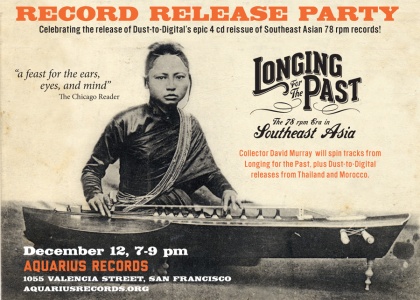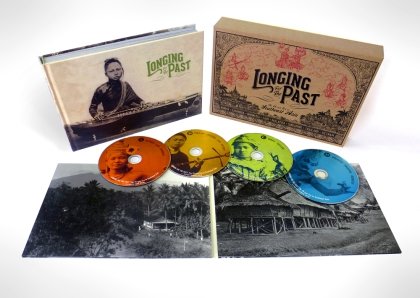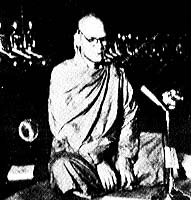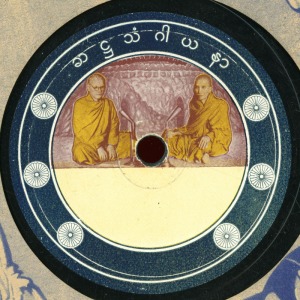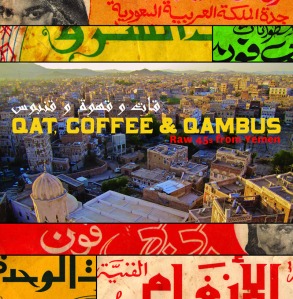Filed under: Uncategorized
I’ll be heading down to LA this weekend to attend the Grammy Awards. “Longing for the Past” has been nominated in the Historical category along with four other great projects. Win or lose, we’re proud to have been nominated and are excited to represent the whole team that made “Longing for the Past” a great project; Lance and April Ledbetter from Dust-to-Digital, Michael Graves of Osiris Studios (sound mastering and restoration), Jon Ward (analog to digital transfer, research, and more!) and the five authors besides myself – Terry Miller, Kit Young, David Harnish, Jason Gibbs, Sooi Beng Tan.
http://www.dust-digital.com/se-asia/
Filed under: Uncategorized
Stop by if you’re in town!
Filed under: Uncategorized
Haji Maji has been dormant for some time now, and here’s the reason why – the last two years have been occupied with completing a project of epic proportions, which I’m happy to announce is finished and is officially released today (October 1st)!
Longing for the Past: The 78 rpm Era in Southeast Asia is a 4 CD set with 90 tracks that span six decades of 78 rpm recordings from Burma, Cambodia, Indonesia, Laos, Malaysia, Singapore, Thailand, and Vietnam. This project is being published by the wonderful folks at Dust-to-Digital, and because of their usual commitment to quality design, I was able to push the limits of what a 78 rpm reissue set can be. The CDs are accompanied by a 9″x 6″, 272-page hardcover book that has over 250 images of record labels and sleeves, and vintage photographs of Southeast Asian musicians. The CDs and book come housed in a handsome slipcase.
Longing for the Past is the first reissue set to survey the traditional music of Southeast Asia. It includes essays on the record industry in Southeast Asia, as well as chapters on the music of each country, plus annotations for each of the 90 tracks. One of my goals with this project was to provide a deeper analysis of the music itself, something that I feel is often neglected in reissues of world music from the 78 rpm era. I think that is often due to space constraints or the fact that the producers are often collectors, rather than musicologists. Although I’m a musician myself, I knew I wasn’t qualified to write about the musical intricacies of Lao village music or Cambodian Buddhist chanting. Therefore, I enlisted the help of specialists to tackle the different regions; Terry Miller (Cambodia-Laos-Thailand), Jason Gibbs (Vietnam), Kit Young (Burma), Sooi Beng Tan (Malaysia-Singapore), and David Harnish (Indonesia). The notes on each track cover general material, but often dig deeper into the modes and scales employed,and other details of the music. Likely deeper than the casual listener requires, but it’s there for those that care!
This project would not have been possible without the help of my many collaborators. Terry Miller was the man that really made this possible. We started working on the material from Laos in 2008. Not only is his knowledge of Thai and Lao music vast, he was helpful beyond the call of duty when it came to finding folks with that secret bit of knowledge we were searching for or someone who could provide an elusive translation. Jason Gibbs, Kit Young, Sooi Beng Tan, and David Harnish also contributed a huge amount of time and effort in putting the written material together. Thanks to all their colleagues who assisted them as well. Jonathan Ward (Excavated Shellac) was a great help and huge inspiration. He transferred almost all the tracks, and lent me nearly a dozen tracks to include. Thanks to Michael Robertson and Will Summits for lending a few sides from their own awesome collections. As always, Michael Graves did a fantastic job on the sound restoration and mastering. The tireless research of Pekka Gronow, Michael Kinnear, Philip Yampolsky, Ross Laird, Hugo Strotbaum, Paul Vernon, Pat Conte, Chris Zwarg, and many others, either through published work or private communication, allowed me to paint a picture of the record industry in the region. Thanks to my wife, master book designer Debbie Berne, for design consulting and Amy Armstrong at Asia Pacific Offset. Lastly, thanks to Lance and April Ledbetter of Dust-to-Digital for making the project happen.
Filed under: Uncategorized
A collaboration between Haji Maji and Dust-to-Digital, five years in the making….
Filed under: Announcements
Heads up! Dust-toDigital has just released an LP of old Moroccan music I produced.
Read more here: http://shellachead.com/2013/03/13/new-release-kassidat-raw-45s-from-morocco/
Filed under: Announcements
Ok, so it turned out to be more of a lovefest than a brawl.
Jon Ward of Excavated Shellac was in town, so we took up DJ McSchmormac on his offer to spin some rare 78s on his internet radio show, Gramophoney Baloney.
In the first part, Jon and I do some role reversal – he plays Asian 78s from his collection and I play African 78s from mine. But we soon got bored with that format and thew in some other genres and regional musics from far flung places such as India, Curacao, Iraqi Kurdistan, Crete, and Azerbaijan.
We ended the show with nearly 30 minutes worth of rare and unusual North African tracks. We also discuss some upcoming projects and other less riveting subjects.
Although this program was assembled quickly, with little time to work on the sound, title translations and such, I think you’ll find it makes for a good couple hours of rare music listening. enjoy!
The podcast is available here:
http://radiovalencia.fm/gramophoneybaloney/2012/09/12/haji-maji-excavated-shellac-on-gramophoney-baloney/
Filed under: Announcements
I’ve been having a bit of fun posting some of my non-Asian 78s from around the world over at ShellacHead.com.
ShellacHead was previously used as my 78 emporium, but I’m just too busy these days to deal with selling records.
Check it out and enjoy.
I had been buying Moroccan records from a dealer in France for awhile when he casually mentioned that he had a few Southeast Asian records.
He said he had three Cambodian records and when I asked what label they were on he replied “Pyral.” Since Cambodian 78s are exceedingly rare, I thought, “ok, but what the hell is Pyral???”
Pyral was a company that, starting in 1934, made a type of transcription disc which could be recorded and played back immediately. These were originally used to record for radio. The discs were made of aluminum coated in acetate that was thick enough to cut a groove into. Of course I was interested and soon had the discs in my hand, surviving an intercontinental trip despite their famous fragility. The labels were all handwritten, and to my surprise one of the three records was marked as Lao khene music. That’s something you don’t stumble on everyday. Fortunately, one side listed as a khene solo also included the name Thao Phet. I recognized this name from the “Music of Laos” album in the Musical Anthology of the Orient series (1968) recorded by Alain Daniélou, the intrepid French musicologist. Thao Phet was a well known musician in Laos who played on Radio Vientiane.
The Pyral disc seems to have been dubbed from the lp or perhaps the original master tapes. It’s a bit odd that somebody would bother to dub a track from an lp to a 78 rpm Pyral disc in 1968, when the Anthology was first published. The second side of the Thao Phet Pyral record, presented here, is a khene ensemble, likely from northern Laos, playing an unidentified classical piece. It’s not clear if this is also Thao Phet. This recording is not on my edition of the Music of Laos. Maybe it’s one of the recordings that did not make it on to the final collection? Or maybe it comes from a different source entirely?
The labels of the other two Pyral records had no clues as to their origins. They were merely numbered. Again, I have not been able to determine if these are from Daniélou’s Cambodian recordings or if they come from another source. On the side labeled “Cambodge 5” the instruments heard are flute (khloy), then xylophone (roneat), then floor zither (krapeu).
One of the most compelling aspects of collecting world music 78s is the experience of dropping the needle and being surprised at what comes out of the speakers. I often have a pretty good idea of what to expect, but it’s the mysteries and surprises that keep me inspired! Here’s one that’s mysterious on several fronts.
As you can see, one side has a label with a picture of two monks and six characters written in Burmese across the top. The reverse side of the record is a white test pressing label. I bought the record thinking it would be Burmese Buddhist chanting. I’ve come across examples of Buddhist chants on 78 from other parts of Southeast Asia, but I was completely knocked out when I heard the music. It’s definitely not Burmese. After passing it around to a few ethnomusicolgists we quickly ruled out Burmese, Thai, Cambodian, Lao and Nepalese. The reverse side is completely different sounding, some kind of pop or Bollywood song, begging the question of why these two disparate tracks were coupled.
The only numbers on the record are in the dead wax, OMC 18780-TI on one side and OJE 27007-TI on the other. These numbers reveal the record was pressed by HMV, either as part of an HMV series or subsidiary, or possibly even a small independent label that used HMV simply as a pressing service, a common practice across Asia. One discographer thought the numbers dated it to about 1945, but further research suggests that may be incorrect.
I began to think that the monk label and the music were unrelated. Maybe the label was a mistake or added later. But when my friend Suwai translated the Burmese writing as “Sixth Buddhist Convention” I began to change my mind. The Sixth Buddhist Convention was a massive Buddhist gathering held in Burma in 1954, to mark the “completion of 2500 years of the Buddhist era (Buddha Jayanti).” Lasting 2 years, 2500 monks came from Sri Lanka, Thailand, Cambodia, Laos as well as other Buddhist countries of Asia to preserve and collect the teachings of Buddha in a specially built cave at the Kaba Aye Pagoda in Rangoon. Of course, I began to wonder, could this music have been recorded at the Convention, perhaps by a visiting delegation? I have yet to find any mention of musical recordings in connection with the Convention. Then again, maybe it really was recorded in 1945 and released for the Convention? Or maybe this was a test and the series was never actually produced?
I wondered who are the monks pictured on the label? Surely they must be well-known. Reading further about the event provided the answer. The Burmese monk Mahasi Sayadaw, famous for his work spreading the meditation practice Vipassana, was one of the main editors and organizers of the Convention. With a bit of googling I was able to find the very picture that was reproduced for the label.
I still have not determined what language is spoken in the short introduction to this record, despite help from the language hounds over at the Omniglot blog. It would be interesting to know what is being said. Maybe it would give us our final clue to determining where the music comes from?
Let’s see if some good ol’ internet crowd sourcing can answer any of these questions…readers?
**********************************UPDATE*****************************************
Well, that didn’t take too long!
A special thank you to the wonderful Tibetan musician Techung for confirming my suspicion that this is Tibetan music.
He writes:
“Yes, indeed. this an old recording from Lhasa, Tibet. The instruments are Dramyen, the long neck lute and Piwang, Tibetan fiddle. The song is titled “Soong la Emo Ri”. In fact I am starting to work on a recording of these types of songs in my next project. I will update on my website in the next few days.”
Check his site soon to hear his version.
How this recording is connected to the Sixth Buddhist Convention remains a mystery.
Filed under: Announcements
I had the pleasure to design the new lp from Dust-to-Digital’s vinyl imprint Parlortone. The album was compiled by Chris Menist from his collection of Yemeni 45s. A follow-up to the LUK THUNG album that I put together for Parlortone, this is the 2nd release in a loose series of post-war traditional and traditional-oriented pop music from around the world, an often overlooked era that falls between the earlier 78s and the later (or in some cases, simultaneous) rock influenced recordings of the 60s and 70s. You can expect a few more cool projects along these lines in the not-too-distant future.
Qat, Coffee & Qambus is full of fantastic Yemeni oud music, get your copy HERE before it sells out!
Hear a sample right HERE.

